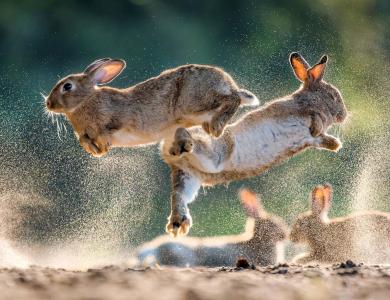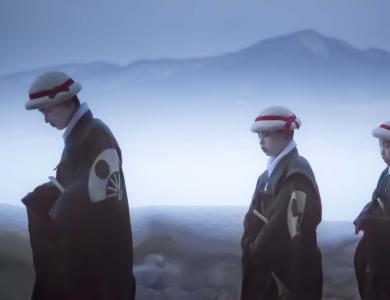
Self-taught artist, photographer, director and broadcaster Simon Frederick is one of the three judges of the ZEISS Photography Award 2019 "Seeing Beyond – The Unexpected." His series of photography portraits "Black is the New Black", on the extraordinary achievements being made by Britain's black community, is currently on display at the National Portrait Gallery, London.
Born in London to Grenadian parents, Frederick produced and directed the award-winning television documentary series Black is the New Black (2016) and They’ve Gotta Have Us (2018), which features notable black artists in cinema today. He has also been profiled as one of 2018’s 100 ‘Most Influential Black Britons’ in the category of Media, Publishing and Entertainment.


Frederick also served as a judge on the Sky Arts series Master of Photography. “That really changed people's perception of me. I think it was very smart of Sky to appoint me as the judge, and also to appoint me as a chief judge. Because from a diversity point of view, we don't see many times on television a black man is a judge, or a black man as the head judge. So for that to happen, and for the audience to be so accepting of that, I think it's one of those things which became a game changer”, Frederick explains to the World Photography Organisation during an interview in London.
Frederick received many messages when he became the judge from a lot of people who wanted to become photographers. “They love the idea of having of this as their job”. A self-taught artist, he doesn't like the word diversity. “People here say, “where are you from? Where are you really from?” There is a thing here in England. It's invisible, and you're treated differently as well,” he adds. His motto is to make things move and his work is always about creating new normals.
Frederick never trained as a photographer or a filmmaker. And that has inspired a lot of people. He feels often people are told “you know you have to go to this school, you have to assist this person, and if you haven't done that you cannot consider yourself to be one. This soo inspired people, they were like “wow, look what you've done.”
Frederick feels he never started to do this job thinking that he was going to inspire people. But one of the results of that TV show was that it inspired “a hell of a lot of people -because again it was not about diversity, but about inclusion.”


His first exhibition in London was six years ago after living in Lisbon. It was an exhibition of famous people that he had photographed. “That was me showing off to London. That was me coming back to London and saying “look I can be all of these things”, he says. After that, Frederick realized that he needed to be very specific about what his future was going to look like, and what it was going to be.
A few years ago, Frederick went to the National Portrait Gallery in London. He was concerned that thousands of pictures were on display but there were only three or four pictures of black people. Now, his photographs of Naomi Campbell, Sir Trevor McDonald, Thandie Newton, and footballer Les Ferdinand are among those on display to recognise the profound impact of black individuals on British culture.
This acquisition became the largest group of portraits of Afro-Caribbean sitters to come into the National Portrait Gallery’s Collection. “I'm happy that I've made history because it's always good to make history. Not everyone gets a chance to do that. I will be adding ten new portraits to the collection every year for the next three years. We've opened the door for change. We have started a great debate in this country”, he explains.
For the exhibition the National Portrait Gallery created a phone app so visitors who stand in the gallery can approach each image, and then each person will speak, explaining more information about themselves: “This has never been done before, so we keep breaking the perspectives of photography and we keep challenging the way that people view photography and making it more immersive.”


When Frederick became a photographer, doors were closed to him simply because of the color of his skin. He wants to make sure that kids growing up can be inspired by all types of people: “Usually those things are hidden from us. So, if they see other people look like them, what they have achieved and what they have become, then we can open doors open for people”.
For Frederick, it doesn't matter what you are, who you are or where you're from. It's all about competition, as we all live in a competitive world. “Again, it's about who's the best person for that thing. But, then, if there is no conversation then about diversity, just a conversation about whether or not everyone is included, then it becomes a different conversation.”
Frederick hopes that by him being one of the judges of the ZEISS Photography Award 2019, there may be many people who will access the competition for the first time. Awards are about the quality of the works, but he underlines the importance of encouraging more people from different backgrounds to take part and making sure that people know that it's possible for them. He says “I think that's really important. I think I represent possibilities.”


